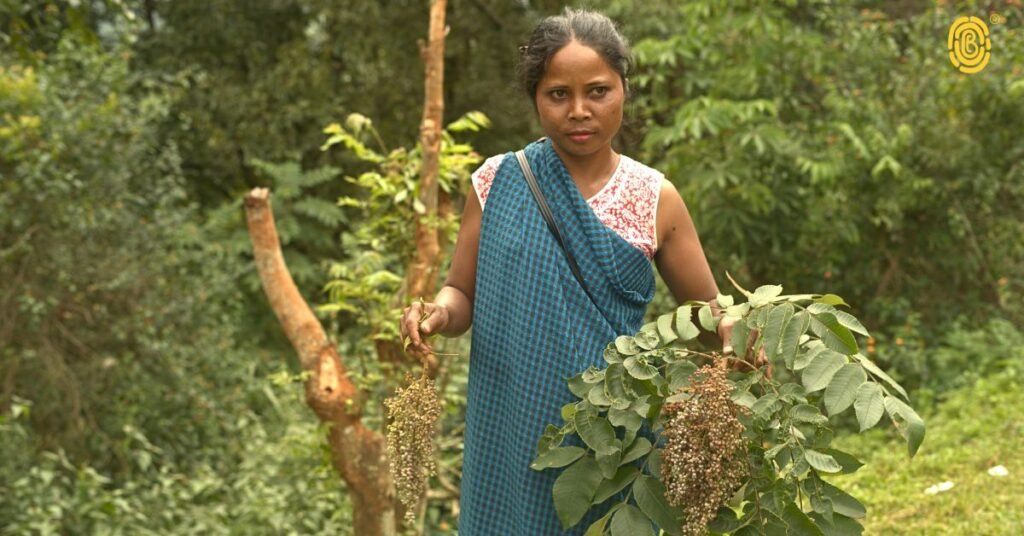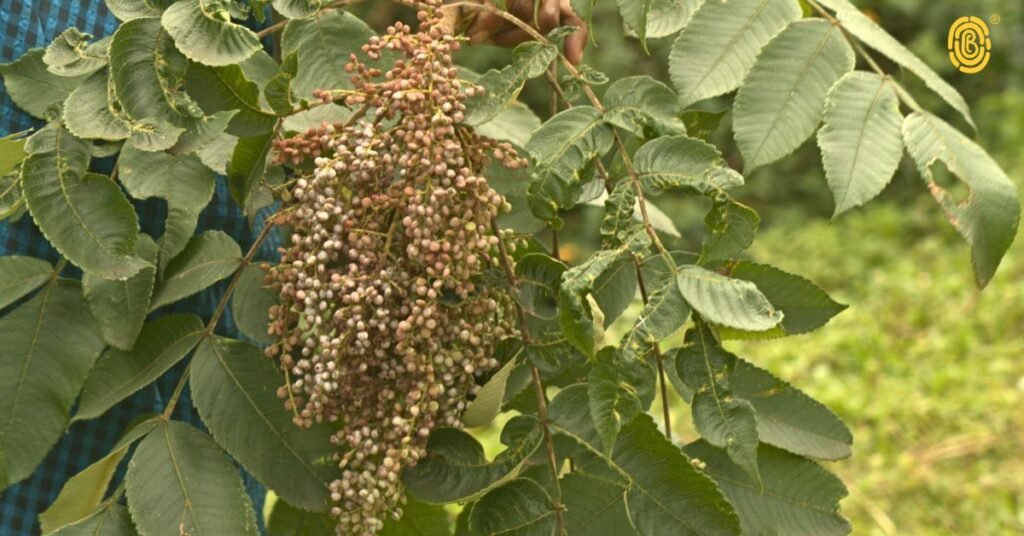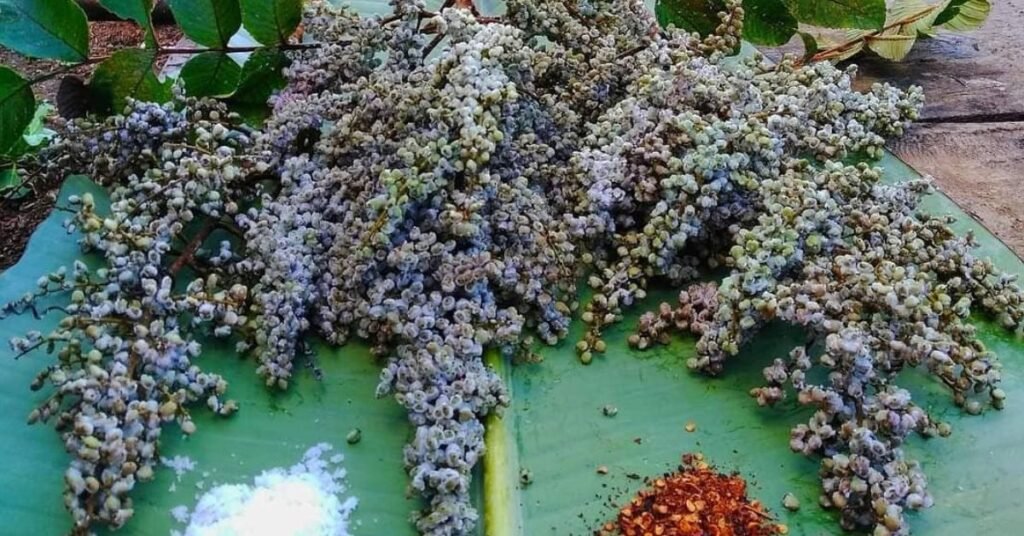Sumac spice is a flowering shrub that belongs to the Anacardiaceae plant family. Rhus coriaria is the scientific name for it. Cashews and mango trees are also members of this family. It thrives in subtropical and temperate regions and grows all over the world, including parts of the Mediterranean, Asia, and Africa.
Sumac has over 200 species, all belonging to the genus Rhus. However, Rhus coriaria, sometimes known as Syrian sumac, is the cultivar most commonly grown for culinary and medicinal purposes.
Sumac is a spice that is often used in Middle Eastern and Mediterranean cuisine. It has a tart, lemony flavor and is produced from pulverized sumac berries. Sumac can be used as a seasoning for various dishes, such as salads, kebabs, and rice dishes. Sumac is characterized by its large, dense clusters of bright red, pea-sized fruit.

Benefits of Sumac Spice
Sumac has been associated with several potential health benefits, although it’s important to note that scientific research is ongoing in some of these areas. Here are some of its potential benefits:
- Antioxidant Properties: Sumac is rich in antioxidants, particularly flavonoids and polyphenols, which can help protect your cells from oxidative damage. This may contribute to overall health and reduce the risk of chronic diseases.
- Anti-Inflammatory Effects: Some studies suggest that sumac may have anti-inflammatory properties, which could be helpful in managing conditions associated with inflammation, such as arthritis.
- Digestive Aid: Sumac has been traditionally used to aid digestion. It may help relieve symptoms like bloating and indigestion.
- Potential Weight Management: Sumac’s tangy flavor can add zest to dishes without extra calories. This may encourage using less salt and sugar in cooking, which can be beneficial for weight management.
- Rich in Vitamins and Minerals: Sumac contains essential vitamins like vitamin C, as well as minerals such as calcium and potassium, which are important for overall health.
- Antimicrobial Properties: Some studies suggest that sumac may have antimicrobial properties, which could help fight certain bacteria and infections

Sumac spice – usage in Northeast India
Rhus chinensis, the Chinese sumac or nutgall tree, is a deciduous shrub or small tree in the genus Rhus. Growing to 6 m (20 ft) tall, it has downy shoots and leaves comprising several leaflets. These turn red in autumn before falling. Sumac is a versatile spice commonly used in North Eastern cuisine. Here are some common home uses of sumac:
- Flavoring: Sumac has a tart, lemony flavor that can be used as a seasoning for various North Eastern dishes.
- Soups and Stews: Sumac can be used to season soups and stews. Just a pinch can add a tangy depth of flavor. For example, you might add a small amount to a lentil soup for a unique twist.
- Traditional Medicine: It is used by numerous households to treat indigestion and other stomach problems. It is also used to cure nausea before a journey if you have it.
- Leisure Munching: It has been said that many communities use the sumac grounded powder as a delicacy to munch or as an accompaniment to coat fruits for example: lime, blood orange, lemon, etc.
Medicinal Usage:
Sumac is used medicinally for various purposes, primarily in traditional and herbal medicine. Here are some common medicinal uses of sumac: - Digestive Aid: Sumac has been used to alleviate digestive issues. It can help soothe upset stomachs, reduce diarrhea, and relieve symptoms of indigestion. For example, tea made from sumac berries might be consumed for this purpose.
- Anti-Inflammatory: Sumac contains compounds with potential anti-inflammatory properties. Some people use sumac-infused oil or poultices to relieve pain and inflammation in sore muscles or joints.
- Antioxidant: Sumac is rich in antioxidants, such as vitamin C and flavonoids, which can help protect cells from oxidative stress. This can have general health benefits.
- Sore Throat Relief: Sumac has astringent properties, and a gargle made from sumac can be used to soothe sore throats and mouth ulcers.
In the North East Indian states of Meghalaya Sumac is called by various names for the different tribes of this region, the Khasi tribe calls it Sohma while the Garo tribe calls it Khitma, While in Mizoram it is known as Khawmhma, and in Nagaland according to the different Naga tribes it is called by different names the Ao Tribe call it Tangmo and the Lotha tribe call it Tangbak.
Sumac fruits are dried, coarsely ground, and used as a table condiment, or (often mixed with salt and chilli powder) just enjoyed between meals. From being used as an ingredient in delectable dishes, to being consumed for fun and leisure, it is also used as a remedy for indigestion. This is why Sumac is used widely in the North Eastern ecosystem, because of its numerous uses for consumers.

Source: https://images.app.goo.gl/reti2C6RPFHh3YTeA
Jason Z Kharkongor – Team, BEE Natural
“I remember when we were younger and we’d travel from one state to another by bus, the journey would be long and tiresome. I would feel nauseous for most of the journey, so as to counteract this, my mother would feed me half a spoon of sumac powder mixed with salt and ginger which we usually purchased in transparent plastic packets and believe it or not, always helped cure any nausea that we felt”.
“I fondly remember my mother offering me Tangbak (Sumac in our Lotha dialect), whenever I experienced food poisoning or stomach discomfort. In our tradition, it was also believed to have protective qualities to ward off evil eye. In terms of culinary usage, we used it as a flavorful substitute for tomatoes, crafting delicious chutneys, often spiced up with King Chilli”
– Eunice Patton, Co-founder, BEE Natural
What makes BEE Natural’s Sumac special?
Our sumac powder is carefully sourced from the North Eastern regions of India known for producing high-quality sumac berries. It boasts a tangy, citrusy flavor with a hint of tartness and earthy undertones. This distinct flavor sets it apart from other sumac varieties.
We take pride in providing sumac powder that is free from additives, preservatives, and fillers. Our sumac berries are harvested at peak ripeness and carefully processed to retain their natural goodness. It is a versatile spice that can be used in various culinary creations. It pairs wonderfully with both savory and sweet dishes, making it a must-have in any kitchen. Sumac has a rich history in Middle Eastern and Mediterranean cuisines. Our sumac powder maintains the authenticity of these traditional flavors, making it a staple for anyone looking to recreate authentic dishes.
- Stories of Sumac Spice from Northeast India - October 20, 2023
- Farmer Traceability – Connecting Food to its Roots - October 3, 2023





